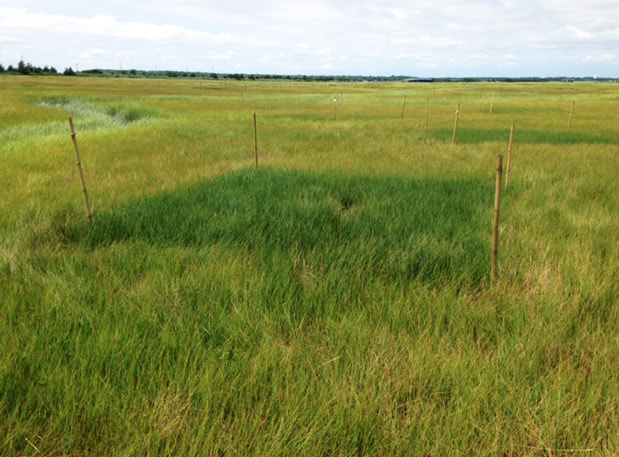Impacts of Nutrients and hurricanes on salt marsh food webs
Often bordering agricultural or urbanized land, coastal salt marsh ecosystems are vulnerable to anthropogenic nutrient inputs that may affect primary productivity of the dominant cordgrass, Spartina alterniflora. In this natural monoculture, we can study cascading effects of nutrient loading on food web structure since they are largely driven by changes in Spartina biomass. Nutrient loading can be classified as a pulse: a one year nutrient treatment, or a press: a four year nutrient treatment. Previous research focuses on short term nutrient pulses but often overlooks longer term nutrient presses. We aim to explore the differences between nutrient presses and pulses on Spartina productivity and food web metrics such as number of links and link density. We also aim to examine these effects in the context of Hurricane Sandy, which hit our plots in 2012. We found that nutrient presses affected food webs differently than nutrient pulses and that that food webs in press plots recovered from the storm more quickly than pulse and control plots. As we gain a deeper understanding of how nutrient loading and hurricane disturbances affect food webs, we can better understand how real-life nutrient inputs will affect salt marsh ecosystems and their valuable ecological services.
Research: Melissa Naugle
Research: Melissa Naugle


